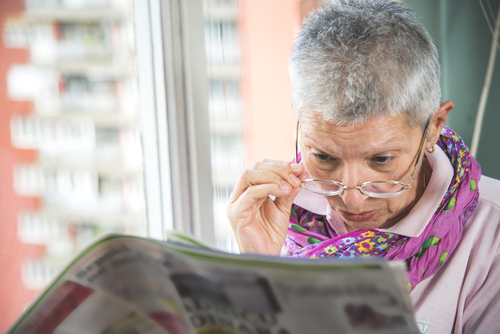What Happens At A Cataract Screening?

When you look at lights at night, do you see halos around them? Have you noticed that objects that should be white now look more yellow?
Both of these changes are signs that you could be developing cataracts. Keep reading to learn more about cataracts and what to expect at a cataract screening!
What Are Cataracts?
Cataracts occur when the naturally clear lens of the eye turns cloudy. This happens because of a build-up of proteins in the lens. When you have a cataract, it’s a lot like looking through a foggy window. Cataracts also make it quite difficult to drive, especially at night.
They often make tasks that you need to focus to do harder as well. This includes things like reading, sewing, or watching television. With age, cataracts become more and more common.
Early on, cataracts are small and usually do not affect your vision. As time passes, your cataracts grow slowly. As a cataract continues developing, it affects vision. Having regular eye exams is the best way to diagnose and track cataract development.
Symptoms of Cataracts
There are many symptoms associated with having cataracts. They include:
- Foggy, blurry, or faint vision
- Having trouble seeing at night
- Being sensitive to light and glare
- Seeing halos around lights
- Needing stronger light for detail-oriented tasks
- Experiencing double vision in one eye
- Seeing colors as more faded or tinted yellow
- Requiring new glasses or contact lens prescriptions much more often
When you first have cataracts, you may be able to find ways to work around your changing vision. This could be as easy as adding more light to rooms or getting a stronger prescription.
As cataracts develop, these workarounds no longer work, making it harder to see. When cataracts start to affect daily activities, discuss cataract surgery with your doctor. Patients experience a lot of success with the procedure.
What Happens At A Cataract Screening?
It is very easy for your doctor to know if you have a cataract. They conduct a few noninvasive, pain-free tests. They will also review your medical and family history and the symptoms you are experiencing. The tests your doctor will conduct include the following:
Vision Test:
During a vision test, your doctor will have you cover one eye and then have you read a series of letters. They are looking at how well you can see them. Your doctor will have you look at progressively smaller letters to see if you have 20/20 vision or an impairment.
Retina Exam:
Your eye doctor will dilate your pupils, making it easier to see the retina. This is done before they use a slit-lamp because the combination of the two makes it easier to detect any issues.
Slit-Lamp Exam:
Your doctor uses a slit lamp to see and magnify the parts in the front of your eye. It lights up your cornea, iris, lens, and the gap between your iris and cornea. This makes it easier to notice any problems. These are the different tests that your doctor conducts at a cataract screening.
Are you ready to treat your cataracts? Schedule a cataract screening at Complete EyeCare West in Columbus, OH now!







